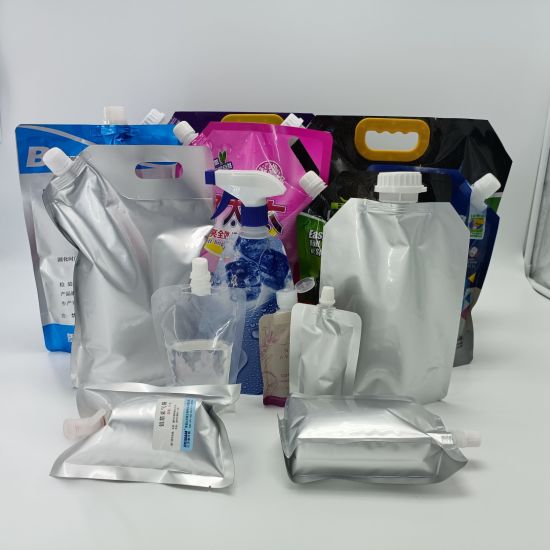Ynlieding
Fleksibele ferpakking is in hieltyd evolving yndustry, drukke om grinzen om te foldwaan oan konsuminten easken en oerwegingen foar miljeu. It is net langer gewoan in manier om in produkt te befetsjen; It is in útwreiding fan it merk en in essensjele diel fan 'e produktûnderfining. Dizze hantlieding is fan doel de soarten, tapassingen, eigenskippen, eigenskippen, en duorsumens fan fleksibele ferpakkingsmateriaal te pakken.

Soarten fleksibele ferpakkingmateriaal
Plestik
Plastic's dominearje de fleksibele ferpakkingssektor fanwegen har alsidichheid, lichtgewicht, en lege kosten. Materiaal as polyetyleen, polypropyleen, en polyester wurde breed brûkt foar in ferskaat oan produkten, út iten items nei kosmetika.
Folie
Aluminium folie biedt uitstekende barriêre-eigenskippen en wurdt faak brûkt foar gefoelige items lykas farmaseuticals of pratine-fiedingsprodukten. De miljeu-ynfloed is lykwols in punt fan soarch.
Papier
Hoewol minder beskerming dan plestik as folie, papier-basearre fleksibele ferpakking winne traktyf fanwege syn recyclabiliteit en biodegradabiliteit. It is in poerbêste kar foar droege produkten lykas sûker, miel, en krûden.
BIO-basearre materialen
Materiaal as polylaktysk soere (PLA) ôflaat fan mais as sûker opkommende as in duorsum alternatyf oan tradisjonele plestik. Dizze bio-basearre materialen binne kompostabel en jouwe goede barriêre eigenskippen.

Applikaasjes fan fleksibele ferpakking
Iten yndustry
Fleksibele ferpakking is essensjeel yn 'e itenyndustry foar it behâld fan' e frisse en it útwreidzje fan 'e shelf libben fan ferskate produkten lykas fleis, snacks, en beferzen iten.
Pharmaceuticals
Sensitive pharmaceutyske produkten fereaskje spesjaliseare fleksibele ferpakkingolutions dy't sterke barriêre eigenskippen oanbiede tsjin focht, ljocht, ljocht, en soerstof.
Persoanlike fersoarging Products
Lotions, cremen, en oare persoanlike soarchprodukten komme faak yn squeeze buizen as sachets makke fan multi-laach fleksibele ferpakkingmateriaal om produkt yntegriteit te behâlden.
Yndustrieel gebrûk
Fleksibele ferpakking hat ek wiid fariearjende applikaasjes yn 'e yndustriële sektor, foaral foar it ynpakken bulkartikelen lykas gemikaliën, adhesiven, en coatings.
Eigenskippen fan fleksibele ferpakkingsmateriaal
Barriêre kwaliteiten
Barriêre kwaliteiten binne krúsjaal foar it behâlden fan 'e ynhâld, foaral foar bederflike guod en farmaseutika. Materialen moatte beskermje tsjin faktoaren lykas focht, soerstof, en ljocht.
Duorsumens
Fleksibele ferpakking moat ferskate stressfaktoaren hâlde, lykas ferfier, ôfhanneling, en temperatuerfluktuaasjes sûnder kompromisearjen fan it produkt binnen.
Estetika
It uterlik en gefoel fan it ferpakking spielje in wichtige rol yn konsumint beslútfoarming. Opsjes fan hege kwaliteit binne beskikber om fleksibele ferpakking visueel oansprekkend te meitsjen.
Gewicht
Ien fan 'e wichtichste foardielen fan fleksibele ferpakking is syn lichtgewicht Natuer, dy't ferfierkosten besuniget en de algemiene koalstoffoetprint.
Sustelabiliteits soargen
Recyclability
De beweging rjochting Recyclebere fleksibele ferpakkermateriaal wint snelheid, oandreaun troch konsuminte fraach en nije wetjouwing.
Biologyske mooglik
Biodegradable opsjes lykas papier en bio-basearre plestik meitsje dy't inoar meitsje, in mear duorsume einen-fan-libbenscenario oanbiede foar de ferpakking.
Boarnen-effisjinsje
Fleksibele ferpakking brûkt faaks minder boarnen yn produksje, opslach, en ferfier yn fergeliking mei rigide ferpakkingopsjes, wêrtroch it in boarne-effisjint kar is.

Technologyske ynnovaasjes
Smart Packaging
QR-koades, NFC-chips, en oare Smart Technologies wurde yntegreare yn fleksibele ferpakking om tafoege wearde te bieden lykas produktynformaasje en ferifikaasje.
Aktive en yntelliginte ferpakking
Technologyen lykas fochtbsaborbers en Oxygen-scavengers wurde opnommen om de plank libben te ferlingjen en de kwaliteit fan 'e produkten te behâlden.
Merktrends
Consumer Preferences
De moderne konsumint is op syk nei gemak, duorsumens, en wearde, riden ynnovaasje en trends yn 'e fleksibele ferpakking-yndustry.
Miljeu wetjouwing
Begjinlike regeljouwing drukke de yndustry nei mear eco-freonlike oplossingen, beynfloedzje materiële keuzes en recycling inisjativen.
Konklúzje
Fleksibele ferpakking is in dynamysk fjild, oanpasse om te foldwaan oan ferskate útdagings fan konsumint freget oan miljeu-soargen. De materialen ferstean en har eigenskippen kinne merken helpe om op 'e hichte te meitsjen mei ynformeare besluten dy't oerienkomme mei sawol har marketing doelen en oanspraaklikens en duorsumens.
Faak Stelde Fragen
- Wat binne de primêre soarten fleksibele ferpakkingsmateriaal?
- Plastyk, folie, papier, en bio-basearre materialen binne de wichtichste soarten.
- Hoe duorsume is fleksibel ferpakking?
- Duorsumens is in groeiende soarch, mar stappen wurde makke yn recyclabiliteit en biodegradabiliteit.
- Wat binne de wichtige eigenskippen fan fleksibele ferpakkingsmateriaal?
- Barriêre kwaliteiten, duorsumens, estetyk, en gewicht binne essensjele eigenskippen.
- Hokker technologyske foarútgong sjogge wy yn fleksibele ferpakking?
- Smart ferpakking en aktyf, yntelliginte systemen binne opkommende trends.
- Hokker yndustry brûke yn haadsaak fleksibele ferpakking?
- De fiedselyndustry, farmaseutika, persoanlike soarch, en yndustriële sektoaren binne de wichtichste brûkers.
Dat, om't jo troch de wrâld navigearje om materialen fan fleksibele ferpakking te navigearjen, moat dizze hantlieding tsjinje as in wiidweidige boarne om ynformeare besluten te meitsjen. Is it net fassinearjend hoe iets like skynber ienfâldich as ferpakking kin sa kompleks wêze en beynfloedzje?